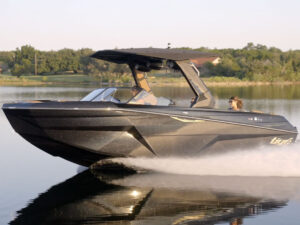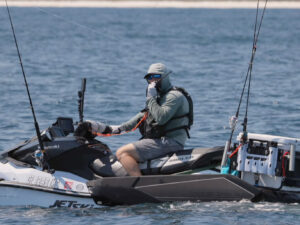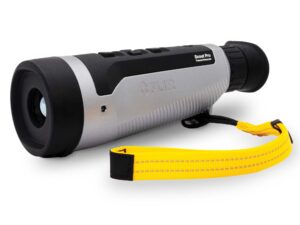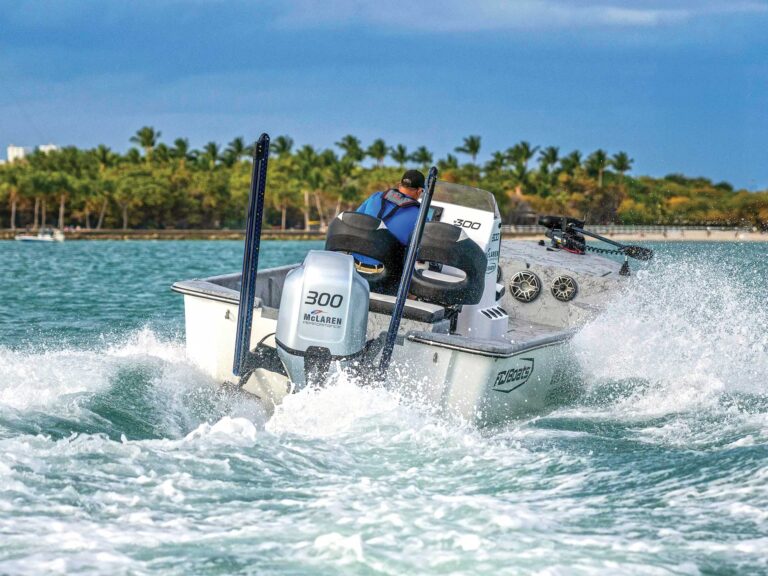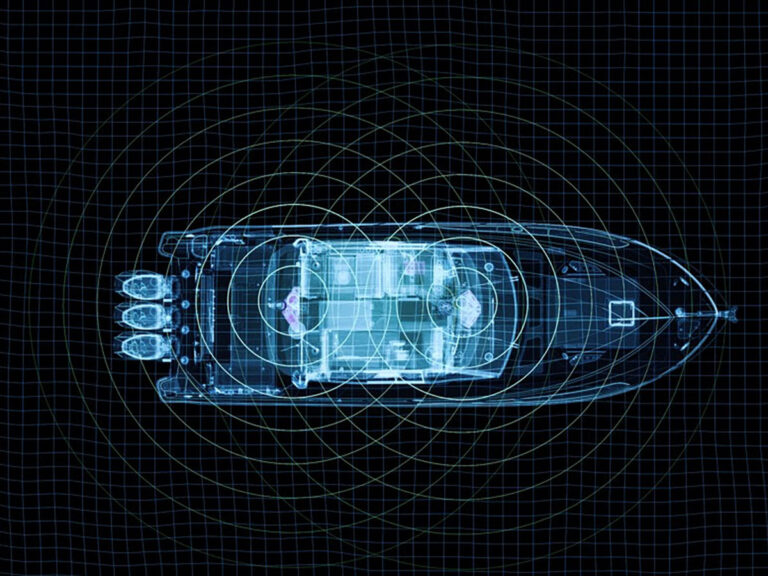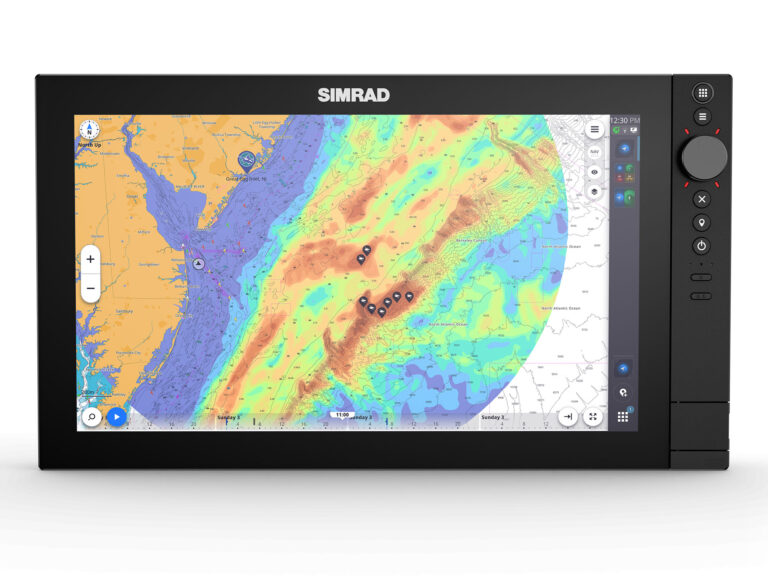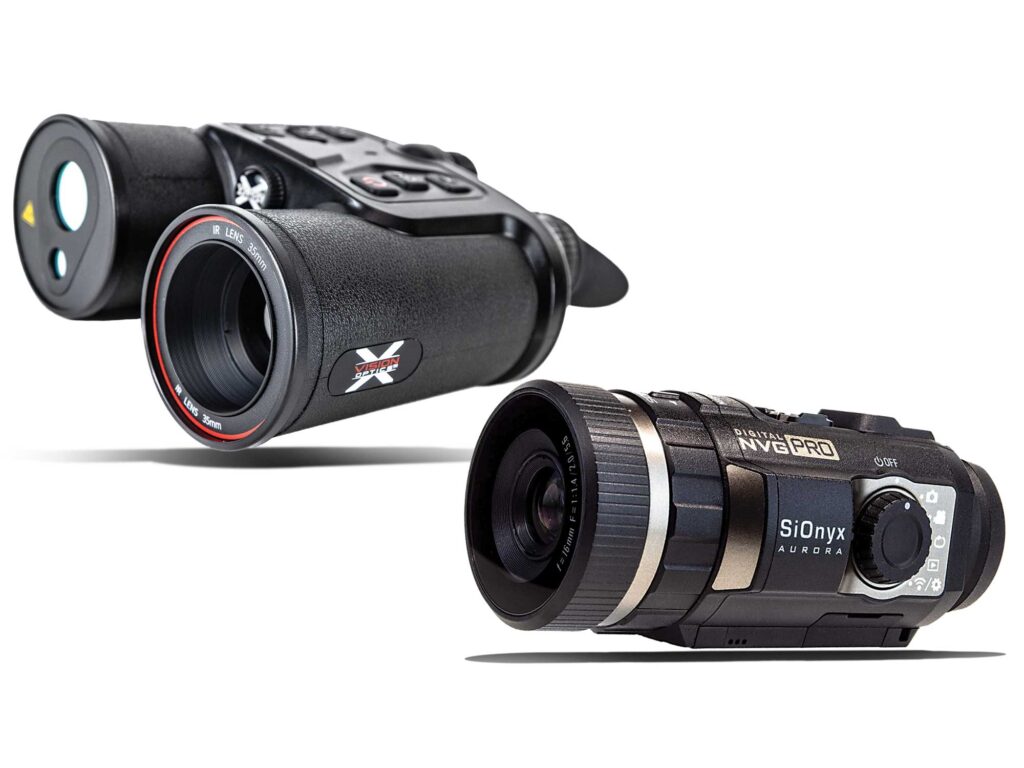
If you want to boat more safely at night, night-vision technology can help minimize your odds of getting off course or missing a hidden aid-to-navigation post or piece of flotsam. There are two basic technologies to open night eyes. Let’s see what those are.
As Far As the Eye Can See
Light is electromagnetic energy measured in nanometers. The human eye can see wavelengths between 380 nm, beginning at violet and bordering on ultraviolet, and 700 nm, which is red and bordering on invisible infrared. The shorter wavelengths of violet and blue range from 380 nm to about 500 nm. They are weaker and are the first to fade from human visibility in low light. From 500 nm to 600 nm—the end of blue to the beginning of red—the waves are longer and stronger, and are last to fade from visibility. Past 700 nm, the waves are long, strong and invisible. But you can feel them—they emit infrared heat.

Feeling the Heat
Optics such as those offered by X Vision and FLIR sense infrared light waves and can detect temperature differences of less than 1 degree. It is the IR devices’ sensitivity to minute temperature changes from one object to another that allows them to project highly detailed images on an IR sensor.

Modern Night Vision
Newer night-vision technology such as the Sionyx Aurora Pro ($849) captures available light from 380 nm UV to nearly 1,100 nm infrared, amplifies it, and projects it onto a digital sensor rather than the old-school phosphorous-charged sensor that rendered the green imaging we see in war movies. The digital sensor yields an image that is closer to photographic and shockingly detailed with no apparent light, and it fills in a lack of color with infrared imaging. It can transmit near-real-time imaging to external displays via a micro HDMI cable or to a smart device via Wi-Fi. It doubles as a still or video camera in dark or daylight and stores images on a microSD card. Should you want to mount such a device, look for the standard 1/4-by-20-inch threaded tripod socket.
Infrared Scopes
FLIR is the longest-running brand in marine infrared technology for mariners, but there are other companies in the market too, such as X Vision, which makes scopes and binoculars. I like the TB 300 binocular for its crisp IR image, its ability to change the color gradient for visual preferences, and for its 16x zoom. Image hotspots can be illuminated in contrasting colors for helpful detail at a glance. It can detect temperature differences of 0.05 degrees Fahrenheit. It has a detection range of 1,500 yards, with strong detail to 500 yards, rendering outstanding clarity with a 16x zoom. A laser range finder works to 1,500 yards and gives better situational awareness in the dark, when depth perception is weakest. Wi-FI connectivity allows displaying images on a smart device.
Read Next: Help for Boaters to See in the Dark

Ship-Mounted Devices
Fixed-mounted devices are valued for their stability and hands-free use on larger vessels. On smaller vessels, chop jostles the camera, and unless it is optically stabilized, the image can jump around on the display. Sionyx’s Nightwave camera ($1,895, westmarine.com) can be mounted upright or upside down and the image flipped with the software. It isn’t stabilized per se, but its method of upsizing the image to a display softens the effect of the chop. In IR devices, be sure to choose one with image stabilization—an important but costly upgrade—or stick with the flexibility of handhelds.
Night-vision technology is widely available, and growing competition makes it more affordable every day.

